Text
Reflective Blog Post
A liberal arts education like Dickinson has allowed me to try out different courses and found my interest in Computer Science. The broad curriculum has provided us with a comprehensive overview of the field as a whole, with a focus on theory – something that I would not have focused on had I taken a boot camp instead of a traditional college education. The enthusiasm of the professors about the topics that they were teaching has helped me feel more engaged and eager to learn during class time. Outside the classroom, all professors encourage the students to visit them during office hours to ask questions about material learned in class or just to chat about their goals and interests in the field. I’ve utilized the office hours to do both – when I have spent a decent amount of time on a question and still cannot arrive at the answer, I’d come to the office and all professors are willing to go through the material if I were unsure, and gave hints/suggestions so that I’d be able to come to the right answer on my own. I’ve also talked to professors about possible career tracks after graduation, and their insights have helped me shape my choices.

The senior seminar runs for two semesters, and one of the things I like most about it is the discussion part. In the first semester, we got the chance to talk about many curated topics chosen by the professor. One of my shortcomings is that I’m not very up to date with the technology world and most often I only focus on learning the technical skills, so this course has complimented me by having discussions on legal issues related to software, business models that have been followed by companies in general, and open-source project in particular, workflow models from the past until now, and more. The student body in the seminar is very diverse and altogether we add a lot of insightful viewpoints to the topic. There are many international students in the class, and we get the chance to listen to how technology law or business is all around the world. In the second semester, the students are the ones who choose the topics and lead the discussions, so the discussions are more vibrant and engaged in my opinion. There are many topics relevant to our daily life and work life in the future as well like blockchain technology, metaverse, surveillance, and social media recommendation algorithms. Since these topics are led by the students, I feel like we get to listen to more personal experiences, and most of the time I learn unexpected things from an opposite point of view. One example would be cryptocurrency – I always thought that we would mostly be opposed to it as it’s very volatile and harmful to the environment, but a student from Russia has said that during a sensitive time like war, the only way they could send money back home is through cryptocurrency, which is decentralized and doesn’t rely on middlemen like bank institutions. Blog writing activities have also prompted me to seek additional material on my own and form my opinions.
The most important aspect of the senior seminar is contributing to the open-source project. Through this activity, I have improved on almost all abilities listed as a Dickinsonian to be able to lead an engaged life of citizenship and leadership in the service of society. We work in a team of five and a smaller subteam of three. We work asynchronously and also meet together every week for a weekly checkup or a code-together session. Not only do I communicate with the team members, but I also get the chance to improve my communication skills through commuting with the Wagtail community members by asking questions, commenting to close outdated bugs, and submitting pull requests. I have taken both 190 and 290 so the first part of the semester when we were learning about Git commands and version control felt a bit redundant to me but learning about them is very helpful for working on open-source projects and in my internship in the future. The frequent project checkpoint presentations help me gain an understanding of other teams and by that gauge our progress and reflect on our workstyle. I have mostly picked front-end bugs to work on and one thing I wished I had done differently is to go further out of my comfort zone and choose to work on a back-end bug.
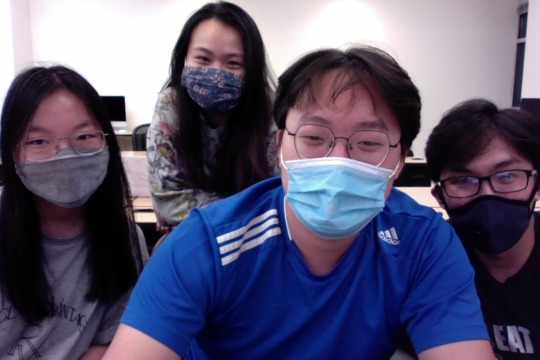
Overall, the computer science major at Dickinson has provided me with a broad understanding of the field in general, and the senior seminar has done a nice job of tying together all the materials we have learned and allowing us to use our skills to contribute to the community while improving ourselves as a student and developer.
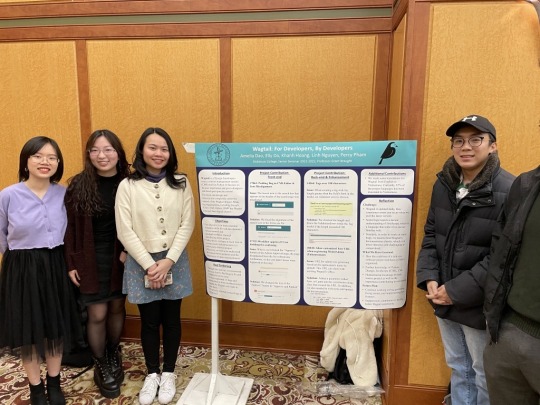
0 notes
Text
Education in Metaverse 🌍
Metaverse is a virtual immersive environment that will soon become more common and accessible like the world of technology we know today. This unknown world comes with many speculations as well as excitement about what it can do, and what can go wrong. Right now, many parents are already concerned about their children being addicted to smartphones with social media applications like Tiktok and Instagram, as well as video games (Call of Duty, League of Legends, and thousands of others). It’s no wonder why many people are worried that the addiction might become worse when children are offered an even more exciting, immersive virtual reality that can potentially replace real-life social interaction. But the future needn’t be like that! Just like there are educational applications, virtual reality and metaverse can also be used to support and push education further. Since the metaverse is still underway, educators and researchers can get started early and join the rise from day one instead of having to catch up with the technology.

From just my personal experience, virtual reality can make children more engaged with the subject which helps them digest and retain information better. For example, with the augmented reality headset, you can use an application that let you “go into space” or watch/interact with epic historical battles like you are actually there. No books or videos can provide this experience. Similar to how there are social media algorithms to keep you engaged with the application, with these added experiences, children can be much more inclined to stay inside a metaverse application and learn.
So how to make sure that the new metaverse can fulfill its potential when it comes to education?
It is critical to think about how researchers can inform designers now so that forthcoming educational products and offerings in the metaverse are high quality and optimized.
We should avoid the gap between technology and education by facilitating conversations between educators - who are adept at teaching the young minds, and the developers of the educational applications to ensure that the platforms are actually conducive to teaching in metaverse. There are a few principles that have been steadily maintained as the pillars of education. Humans learn best when they are actively involved, engaged with the material and receive little distraction from outside factors, having meaningful experiences that are related/relevant to their lives, and socially interacting with others in high-quality ways around new material. Educational apps in metaverse should keep these principles in mind while developing. Since this new technological world will be more immersive and allows for activities that are not feasible or financially practical in real life, it holds the power to fulfill all of those principles and push education forward. Apps in metaverse that aims to educate should also do away with possible distractions like ad-pop, and focus on weaving lessons into the narrative/storyline of the game, or any other details that take advantage of the immersive environment. It should not just be a 3d version of current applications but should aim to go forward and truly provide a unique experience. Imagine learning a language by virtually going to the country and having conversations with the NPC (non-playing character) or other players inside the game, all within the comfort of your own living room.
This doesn’t mean that we would try to replace professors and teachers with the application. Even if we can make AI realistic and advanced, the interaction between teachers and students is still valuable in learning, and educators are better at explaining the material to a student than a bot. There are questions you cannot get from Google, so there are questions that can only be answered by teachers. Metaverse can, however, bring teachers into this world and let them use technology as their teaching material.
Below is one video from Meta on education in metaverse. All in all, I am excited for the opportunities that metaverse can bring to education, and I believe that if we start thinking about it today, future generations can enjoy a ground-breaking education.
youtube
Sources:
Hirsh-Pasek K, Zosh JM, Golinkoff RM, Gray JH, Robb MB, Kaufman J. Putting Education in “Educational” Apps: Lessons From the Science of Learning. Psychological Science in the Public Interest. 2015;16(1):3-34. doi:10.1177/1529100615569721
Wartella, Ellen Wartella, and Kathy Hirsh-Pasek. "A Whole New World: Education Meets The Metaverse". Brookings, 2022, https://www.brookings.edu/research/a-whole-new-world-education-meets-the-metaverse/.
"Education In The Metaverse". Meta, 2021.
0 notes
Text
Data and the Tale of Two Internets
People have either feel really lucky that suddenly an ad shows up that features the perfect gifts for Christmas, or psyched out when suddenly something they briefly search on the Internet start showing up everywhere on their social media. Tech giants have relied on the advertisement industry to keep their products free while still making billions in revenue. Long were the days when advertisements were printed on paper or fighting for prime slots to be shown on TV. Data is collected on users so that they can be served the most personalized ads, similar to how suggestion algorithms provide you with movies or music that mostly match your taste. However, users are increasingly wary about data privacy issues, and the introduction of just a little pop-up window on iPhone asking users whether they allow the app to track their activities or not has caused controversies and detrimental effects on the revenues of tech companies relying on advertisement, signaling a change in the course of the Internet and possibly new business models.
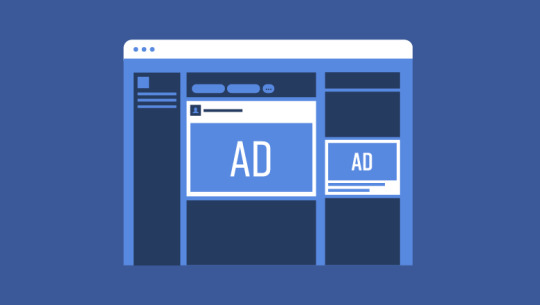
While on Android, Google can still serve targeted ads, they cannot do that on iPhone, which prompts Google executives to say that Apple has turned privacy into a luxury. The Internet might become more bipolar where some sites choose to be compatible with browsers that allow the use of cookies and data-tracking. Another problem with this change is that many businesses have turned to subscription-based business model to generate revenue stream, or raise their goods’ prices to offset the loss in business after failing to serve targeted ads to customers. This can create accessibility issues to people who are less privileged or simply cannot afford to subscribe to the product. It’s undeniable that data privacy matters, but user data is instrumental to a lot of activities on the Internet and it drives technological advancement, so there should be a way to make the two of them compatible by protecting the data collected on the users while still using them to improve the product.
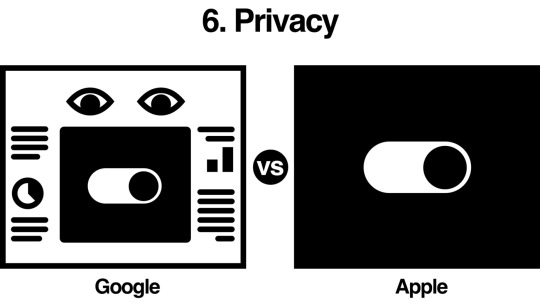
One of the Big Tech Giants, Meta, has responded to these changes in data-collecting activity with efforts to evolve digital advertisement to become less reliant on third-party data and develop privacy-enhancing technologies while collaborating with the industry to develop new standards in support of the new era, where consumers are becoming more data-literate and wary of their data privacy. There are three privacy-enhancing technologies (PETs) introduced on Meta engineering blog: Secure Multi-Party Computation (MPC), On-Device Learning, and Differential Privacy. MPC allows two parties to work together while limiting the information that each party can learn. On-Device Learning trains an algorithm from insights processed right from the activity on your devices without sending the data to a remote server or cloud. Differential privacy is a technique that can be used on its own or coupled with other privacy-enhancing technologies to protect data from being unidentified. It works by introducing calculated “noise” to the data. MPC has already been put to use with a solution called Private Lift Measurement to help advertisers understand how they are performing. This framework is still being developed by Meta before making it become available to all advertisers, but they have released this technology as an open-source project for other developers to use. The use of on-device learning will be dependent on the time and number of users using the platform, which means Meta needs to attract the users’ attention and keep them more engaged against other competitors like Tiktok.
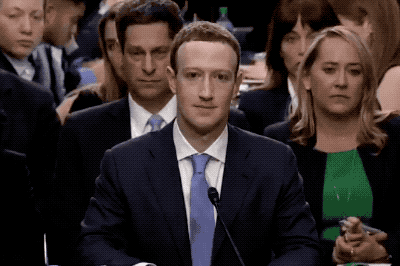
Overall, I think tech giants will try their best to win the war over data as it’s an invaluable asset that can be used simultaneously for various applications. It would be interesting to see the effect of the stop in collecting user data on the Internet and our everyday life in a few years.
Fun fact: UK Competition Regulators have ordered Meta to sell off Giphy in fear that Meta will limit other competitors’ access to GIPHY gifs and thus drive traffic to Facebook. It’s all about the fight over more data one has!

Sources:
"Privacy-Enhancing Technologies And Building For The Future". Meta For Business, 2021, https://www.facebook.com/business/news/building-for-the-future.
"What Are Privacy-Enhancing Technologies (Pets) And How Will They Apply To Ads? | Meta". Meta, 2021, https://about.fb.com/news/2021/08/privacy-enhancing-technologies-and-ads/.
Toscano, Joe. "Data Privacy Issues Are The Root Of Our Big Tech Monopoly Dilemma". Forbes, 2021, https://www.forbes.com/sites/joetoscano1/2021/12/01/data-privacy-issues-are-the-root-of-our-big-tech-monopoly-dilemma/?sh=398f64e13cfd.
"The Battle For Digital Privacy Is Reshaping The Internet". Nytimes.Com, 2021, https://www.nytimes.com/2021/09/16/technology/digital-privacy.html.
"Opinion | Google’S Sundar Pichai: Privacy Should Not Be A Luxury Good (Published 2019)". Nytimes.Com, 2019, https://www.nytimes.com/2019/05/07/opinion/google-sundar-pichai-privacy.html.
0 notes
Text
Let's talk about React!
React is an open-source front-end JavaScript framework, created and released by Facebook in 2013. It is used to build fast and interactive user interfaces for web applications and mobile applications. There are many blogs on the advantages and disadvantages of using React in your project, but this post only focuses on the much-coveted legal aspect of React: its license.

React was initially released under Apache V2 OSS license. This license makes sure that the users don't have to worry about patent infringement, since the user is granted a license to any patents that cover the software. Taken directly from the license in section 3. Grant of Patent License:
"Subject to the terms and conditions of this License, each Contributor hereby grants to You a perpetual, worldwide, non-exclusive, no-charge, royalty-free, irrevocable (except as stated in this section) patent license to make, have made, use, offer to sell, sell, import, and otherwise transfer the Work...".
This license is terminated if the user sues for patent infringement over this software. This license is suitable for projects who want to promote adoption for commercial uses, since it's very concise and compact on the matters of patent and contribution.
One year afterward, Facebook switched to BSD license, but with a separate added patent grant. From Facebook's blog, the intention behind this BSD + Patent license is to avoid meritless patent litigations and thus provide more rooms for developers to make meaningful contributions towards the project. In their words, "The patent grant says that if you’re going to use the software we’ve released under it, you lose the patent license from us if you sue us for patent infringement." I feel like this aim could have been accomplished with just the original Apache license.
This separate patent license only seems to make people frustrated and skeptical about using React, while not serving any practical purpose. People might say that this is anti-competitive, but in order for it to be anti-competitive, Facebook should already have filed patents and disclose them in the grant. Furthermore, JavaScript frameworks are fairly similar in purpose, so it's hard to say whether the frameworks have enough merit to be patented. Their implementations are certainly different, not that's the matter of copyright, not patent.
In the same blog posted in August 2017, Facebook said that it would not change the default license for React at that moment. However, in September 2017, Facebook announced that the React project would adopt MIT license. This article on FreeCodeCamp provided a timeline of the events during July - September 2017 that prompted this change in license.

The first event that triggered this chain of action was when Apache Software Foundation listed Facebook's BSD + Patent license in its Category-X and banned the use of BSD+Patent licensed tools in their open source projects. In one of the comments under the thread in ASF that discusses this legal issue, it is said that FB's license is not compatible with Apache v2, and Facebook has also responded on their blog that:
"source code licensed under the Facebook BSD + Patents license can be combined with source code licensed under other open source licenses like BSD, MIT, Apache 2.0, and GPL. Additionally, as has always been the case, you may distribute BSD + Patents licensed code with other popular open source licenses, such as BSD, MIT, Apache 2.0, and GPL."
So the decision to ban FB's license is not about legal compatibility with other projects. Once again, it seems to be the case that FB's patent grant wording causes a lot of concerns that do not have any practical issues. This is a problem of people feeling that this license does not hold the spirit of the open source community, and it's detrimental to an open source project to lose community support. The decision to switch to MIT license has resolved the uncertainty around React's legal matter, and it remains one of the most loved frameworks.
I started using React in 2020, so I was not really aware of the dispute over its license since it was resolved at that time. Furthermore, I am not in any business, so my concerns for patent is 0. A blog post on Medium provides some analysis with examples of how you might not want to use React for your start up (it was published in 2017 and thus no longer relevant for the current situation, but it’s an interesting read).
Thanks for reading!
Sources:
"Legal Notes: What’S The Deal With Reactjs’S Licensing Scheme?". Codemag.Com, 2021, https://www.codemag.com/article/1701041/Legal-Notes-What%E2%80%99s-the-Deal-with-ReactJS%E2%80%99s-Licensing-Scheme.
"Facebook Just Changed The License On React. Here’S A 2-Minute Explanation Why.". Freecodecamp.Org, 2021, https://www.freecodecamp.org/news/facebook-just-changed-the-license-on-react-heres-a-2-minute-explanation-why-5878478913b2/.
Wolff, Adam. "Explaining React's License". Facebook Engineering, 2021, https://engineering.fb.com/2017/08/18/open-source/explaining-react-s-license/.
0 notes
Text
Open Source: Start and Now
It's interesting to look back in time and see how the evolution of open-source software takes place. This blog is meant to be a brief touch on the start of open source, and how is it being incorporated into today's business.
Hardware was the star back in the 1950s while software was just something that came along with it. The target consumer of computers at that time were mostly scientists and technicians, who would take the piece of software, improve it, and share it with other customers or back to the manufacturers themselves. It was called "Public Domain Software." Although what I just described sounds similar to nowadays open-source projects, the two terms are very different. "Public Domain Software" refers to software that is not restricted by copyright, while "Open-Source Software" is a subset of free software available under the open-source licensing. This license gives people the legal right to use the piece of software, while with public domain software, the legal status might be trickier.
You can safely incorporate open-source software into your project even if it's for commercial use. According to The Open Source Initiative, the Open Source Definition guarantees that you can use it for commercial purposes, and you can also sell open-source software. Note the difference between commercial and proprietary: you cannot place further restrictions on the people who receive the software. Furthermore, if the software is under copy-left licensing, you are required to release your software under the same license as that of the open-source code you use.
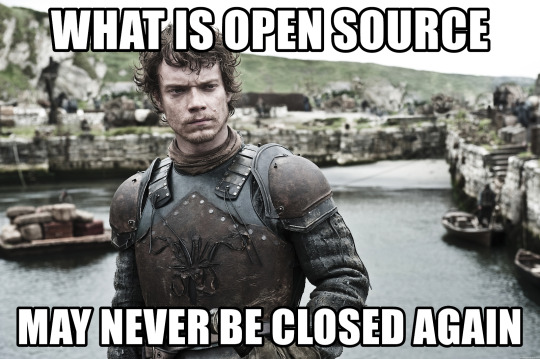
Even though LEGO is not open-source, this video is and it offers introduction to open-source and the benefits of it.
youtube
Apart from using open-source code for commercial use, there are many business models developed with open-source software at its core. Since you have the freedom to do anything with the software, open-source might sound counterintuitive to business, but there are many companies making profits with their open-source products.
Firstly, the Open-Core Model
To put it shortly, with open-core, companies release the core of their product as open-source while the surrounding features remained proprietary. With this model, companies can accumulate base users and developers for the product, and later on, build a proprietary version that focuses on the shortcomings of the open-source version. Example of this model includes Confluent, MongoDB, and Github.
Secondly, the Support and Service (or Professional Services Model)
This model has been around since the beginning of open-source, where companies pay for consultancy and support. Red Hat is one example - they provide software for free and charge a fee for support. They have since added a subscription model to their business, and so far the revenue generated from subscriptions is more significant than services. Hortonworks is another company that still generates the majority of its revenue through support and services.

Thirdly, SaaS (software-as-a-service)
WordPress and other website hosting companies are examples of this model. This model is pay-as-you-go, allowing users to have access to software via the internet. You don't have to install it or purchase any license. These types of software are especially attractive to non-technical users because they don't have to monitor or deal with the technical side - they can simply host their websites on the Internet.
Lastly, the Hosting Model
This model allows end-users to utilize the infrastructure components similar to the SaaS (software-as-a-service) model. The profit of this is dependent on the willingness to pay of the customers: for large enterprises with sophisticated devops teams, they would prefer to host for themselves if the price is higher than the cost of the infrastructure. Furthermore, cloud vendors like AWS are offering managed hosting solutions for common open-source packages, which create much more competition in this space. More on the difference between SaaS and hosted software.
As a parting note, this is an interesting Github Repo on how to find funding for your open-source software.
What do you think about the future of sustainable open-source products?
0 notes
Text
Comp 491 First Post
Hi,
My name is Amelia, and this is my blog for course COMP 491 F21. This blog is used for posting reflective writing on reading and discussion topics related to social, ethical and legal issues in technology.
My plans after college are to travel to different countries, improve my language skills, and work as a software engineer.
1 note
·
View note